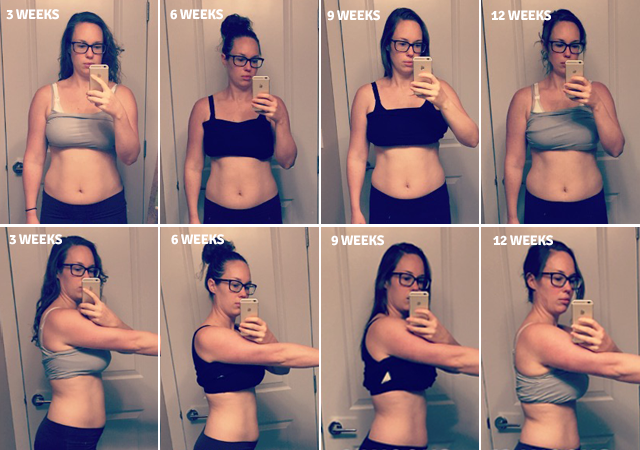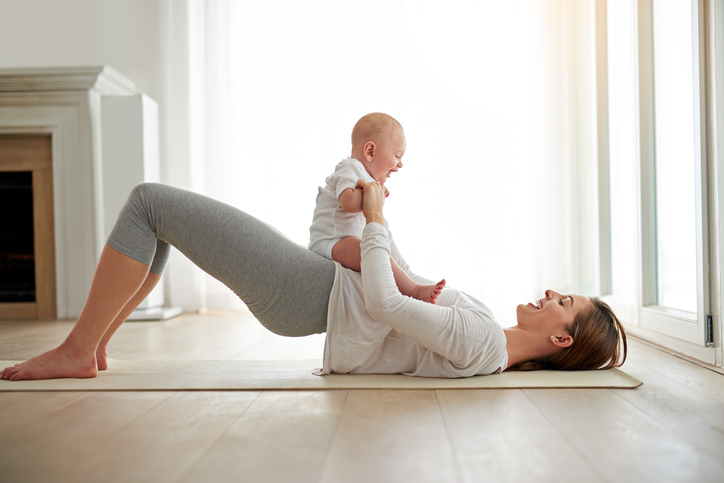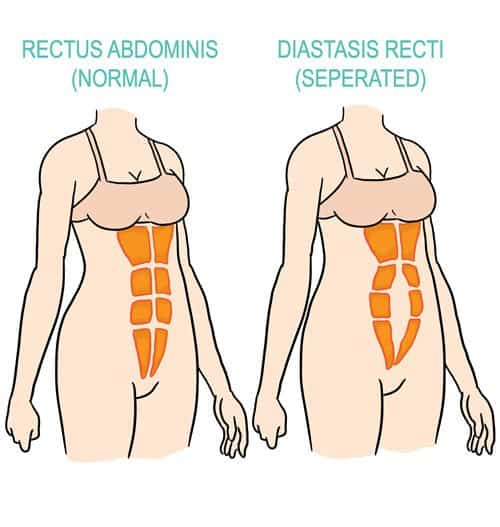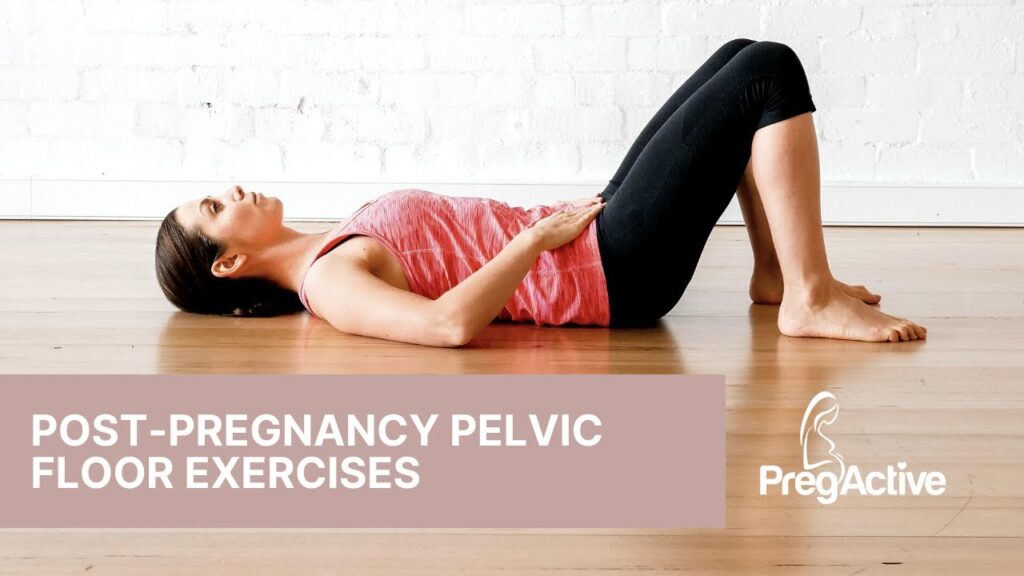
Congratulations on becoming a new mom! Now, as you enter the post-pregnancy phase, it’s important to focus on regaining your strength and getting back into shape. In this article, we will explore safe and effective techniques that can help you rebuild your strength while considering the unique needs of your post-pregnancy body. From gentle exercises to expert tips, we’ve got you covered on your journey to post-pregnancy fitness success.

Safe and Effective Techniques for Post-Pregnancy Fitness
Understanding the Postpartum Body
After giving birth, your body goes through numerous changes as it recovers from the pregnancy and delivery process. It is essential to understand these changes to navigate your post-pregnancy fitness journey effectively. The postpartum period is characterized by hormonal fluctuations, physical healing, and adapting to caring for a newborn. Some common changes include weakened abdominal muscles, pelvic floor dysfunction, and increased joint laxity. By understanding these changes, you can tailor your fitness routine to ensure a safe and effective recovery.
Consulting with Your Healthcare Provider
Before starting any post-pregnancy fitness regimen, it is critical to consult with your healthcare provider. They can provide valuable guidance and determine if you are physically ready for exercise. Your healthcare provider will consider factors such as your overall health, the type of delivery you had, and any specific postpartum complications. By discussing your fitness goals and concerns with your healthcare provider, you can receive personalized advice and recommendations tailored to your unique needs.
Setting Realistic Goals
Setting realistic goals is crucial when embarking on your post-pregnancy fitness journey. Remember, your body has just gone through a significant transformation, and it will take time to regain strength and fitness. Instead of aiming for a quick bounce-back, focus on gradual progress and achieving milestones along the way. Setting realistic goals will help you maintain motivation and prevent feelings of discouragement. It is essential to be patient with yourself and celebrate each small achievement on your path to regaining strength.
Gradually Increasing Physical Activity
Gradually increasing physical activity is key to a safe and effective post-pregnancy fitness routine. Begin by incorporating gentle movements such as walking and stretching into your routine. Slowly increase the intensity and duration of your workouts as you start feeling stronger. Listen to your body and pay attention to any discomfort or pain. If something doesn’t feel right, it’s essential to modify or stop the exercise. Remember, your body is unique, and your fitness journey should be customized to your needs and abilities.

Nutrition and Hydration for Recovery
Eating a Balanced Diet
Proper nutrition plays a vital role in post-pregnancy recovery and fitness. Focus on consuming a well-balanced diet that provides essential nutrients to support healing and replenish energy levels. Include a variety of fruits, vegetables, whole grains, lean proteins, and healthy fats in your meals. Avoid crash diets or extreme calorie restrictions, as they can deprive your body of the nutrients it needs. Instead, aim for a sustainable and nourishing eating plan that promotes overall well-being.
Including Essential Nutrients
In addition to following a balanced diet, it is crucial to ensure you are getting essential nutrients for post-pregnancy recovery. Nutrients like iron, calcium, vitamin D, and omega-3 fatty acids are especially important during this period. Iron helps replenish blood loss from delivery, while calcium and vitamin D support bone health. Omega-3 fatty acids promote brain development in breastfeeding infants. Consult with a registered dietitian or healthcare provider to ensure you are meeting your nutritional needs.

Hydrating Properly
Proper hydration is often overlooked but plays a significant role in post-pregnancy recovery. Adequate water intake supports overall body function and helps prevent dehydration, especially if you are breastfeeding. Aim to drink water consistently throughout the day and listen to your body’s thirst signals. Remember that beverages like caffeinated drinks and alcohol may affect hydration levels and should be consumed in moderation.
Breastfeeding Considerations
If you are breastfeeding, it is important to consider the impact of your nutrition and hydration choices on both yourself and your baby. Certain foods can affect breast milk production, and some babies may have sensitivities to specific foods through breast milk. Consult with a lactation specialist or your healthcare provider for guidance on maintaining a healthy diet while breastfeeding to ensure both you and your baby’s well-being.

Exercises for Core Strength
Engaging the Pelvic Floor Muscles
The pelvic floor muscles undergo significant stress during pregnancy and childbirth. Engaging and strengthening these muscles is crucial for overall core strength and to prevent or address any pelvic floor dysfunction. Kegel exercises are a common method to engage the pelvic floor muscles. To perform kegels, simply contract and lift the muscles around your vagina and anus, hold for a few seconds, and then release. Incorporating kegels into your daily routine can enhance pelvic floor function and contribute to overall core strength.
Diaphragmatic Breathing
Diaphragmatic breathing is a technique that involves consciously using your diaphragm to breathe deeply. It not only helps relax and reduce stress but also activates the deep core muscles, including the pelvic floor. To practice diaphragmatic breathing, inhale deeply through your nose, allowing your abdomen to expand as you fill your lungs with air. Exhale slowly through your mouth, engaging your core muscles and focusing on a controlled release of breath. Regular practice of diaphragmatic breathing can strengthen the core and aid in post-pregnancy recovery.
Transverse Abdominal Activations
The transverse abdominis is a deep core muscle that acts as a natural corset, providing stability to the spine and abdomen. Activating and strengthening this muscle is essential for rebuilding core strength post-pregnancy. To engage the transverse abdominis, imagine pulling your belly button in towards your spine without holding your breath or bracing your other muscles. Hold the contraction for a few seconds and then release. Gradually increase the duration and intensity of these activations to enhance core strength and stability.
Progressing with Planks and Bridges
As your core strength improves, you can gradually incorporate more challenging exercises such as planks and bridges. Planks involve maintaining a position similar to the top of a push-up, with your elbows and toes supporting your body weight. Bridges involve lying on your back with your knees bent, lifting your hips off the ground, and squeezing your glutes and core. These exercises target multiple core muscles and help rebuild overall strength. Start with modified versions that suit your current fitness level and gradually work your way up to more advanced variations.
Workouts to Rebuild Overall Strength
Start with Low-Impact Activities
When starting your post-pregnancy fitness routine, it is important to begin with low-impact activities. These activities minimize stress on your joints and help you gradually build cardiovascular endurance and overall strength. Walking, swimming, and stationary cycling are excellent low-impact options to consider. Start with shorter durations and low intensity, and gradually increase as your body becomes more accustomed to the exercise.
Incorporating Cardiovascular Exercise
Cardiovascular exercise is an essential component of any post-pregnancy fitness routine. It helps improve heart health, boosts metabolism, and aids in weight loss. As you progress in your fitness journey, gradually incorporate cardiovascular exercises like jogging, dancing, or aerobic classes. Aim for at least 150 minutes of moderate-intensity aerobic activity each week for optimal cardiovascular fitness.
Resistance and Strength Training
Resistance training is crucial for rebuilding overall strength and increasing muscle tone. Start with lighter weights or resistance bands and focus on exercises that target major muscle groups such as the legs, arms, and back. Squats, lunges, bicep curls, and overhead presses are excellent examples of strength training exercises that can help you regain muscle strength and tone.
Including Flexibility and Stretching
Flexibility and stretching exercises should not be overlooked in your post-pregnancy fitness routine. These exercises help improve range of motion, reduce muscle stiffness, and prevent injuries. Incorporate dynamic stretching, which involves moving your body through a full range of motion, and static stretching, which involves holding stretches for a period of time. Additionally, activities like yoga and Pilates can enhance both flexibility and overall strength, making them excellent options for post-pregnancy workouts.

Cardiovascular Fitness and Endurance
Low-Impact Options
When focusing on cardiovascular fitness and endurance during the post-pregnancy period, it is important to start with low-impact options. Low-impact exercises reduce stress on your joints while still providing an effective cardiovascular workout. Walking, swimming, and using an elliptical machine are all great low-impact options to consider. Gradually increase the duration and intensity of your workouts to improve cardiovascular fitness over time.
Gradual Increase in Intensity
As you become more comfortable with low-impact exercises, gradually increase the intensity of your workouts. This can be done by incorporating higher intensity intervals or adding resistance to your exercises. For example, you can increase the speed or incline on a treadmill, try high-intensity interval training (HIIT) workouts, or add ankle weights to your walks. Gradually challenging your cardiovascular system will help improve endurance and overall fitness.
Interval Training
Interval training involves alternating between periods of high-intensity exercise and active recovery. This method has been shown to be highly effective for improving cardiovascular fitness and burning calories. For example, you can alternate between jogging and walking, or sprinting and jogging, during a set period of time. Interval training allows you to push your limits and maximize the benefits of your workout in a shorter amount of time.
Monitoring Heart Rate
Monitoring your heart rate during exercise can help ensure you are working at an appropriate intensity level. It is recommended to use the formula 220 minus your age to estimate your maximum heart rate. During moderate-intensity exercise, aim to keep your heart rate between 50-70% of your maximum heart rate. This range allows you to work hard enough to improve cardiovascular fitness without overexerting yourself.
Strength Training and Muscle Building
Choosing the Right Exercises
When incorporating strength training into your post-pregnancy fitness routine, it is important to choose the right exercises that target major muscle groups. Examples of compound exercises that engage multiple muscle groups include squats, deadlifts, bench presses, and rows. These exercises provide maximum benefit and help you effectively rebuild overall strength.
Beginning with Light Weights
Start your strength training journey with light weights or resistance bands, especially if you are new to strength training or are recovering from pregnancy. Light weights allow you to focus on maintaining proper form and gradually build strength without putting excessive stress on your muscles and joints. As you become more comfortable and confident, you can gradually increase the weights.
Progressing the Weight and Intensity
Progressing the weight and intensity of your strength training exercises is key to ongoing improvement. Once you feel comfortable with the weights you are currently using, gradually increase the resistance. Aim for a weight that challenges you but still allows you to complete the desired number of repetitions with proper form. Progressive overload, or gradually increasing the stress on your muscles, is essential for continued strength gains.
Targeting Major Muscle Groups
To ensure a comprehensive strength training routine, it is important to target all major muscle groups in your body. These include the chest, back, shoulders, arms, core, and legs. Incorporate exercises that engage each muscle group, such as push-ups, pull-ups, shoulder presses, bicep curls, planks, squats, and lunges. Balancing your strength training across all major muscle groups will help you maintain a well-rounded and functional physique.

Incorporating Flexibility and Stretching
Dynamic Stretching
Dynamic stretching is a form of stretching that involves moving your body through a full range of motion. These exercises are performed with controlled movements to gently lengthen and warm up your muscles. Incorporate dynamic stretches such as arm circles, leg swings, and walking lunges before your workouts to prepare your muscles for activity. Dynamic stretching helps improve flexibility, increase blood flow, and reduce the risk of injury.
Static Stretching
Static stretching involves holding stretches for a period of time without any movement. This type of stretching is best performed after your workout or physical activity when your muscles are warm. Focus on stretching major muscle groups such as the hamstrings, quadriceps, calves, chest, shoulders, and back. Hold each static stretch for 15-30 seconds and remember to breathe deeply and relax into the stretch. Static stretching helps improve flexibility, reduce muscle soreness, and promote relaxation.
Yoga and Pilates
Yoga and Pilates are highly effective practices for improving flexibility, strength, and body awareness. Both disciplines focus on controlled movements, proper breathing, and precise execution of exercises. Yoga emphasizes flexibility and relaxation, while Pilates focuses on core strength, stability, and alignment. Consider attending yoga or Pilates classes specifically designed for post-pregnancy women or follow online videos that cater to your needs. These practices can provide a well-rounded workout and enhance your overall post-pregnancy fitness.

Focusing on Tight Muscles
Identifying and focusing on tight muscles is essential for maintaining flexibility and preventing imbalances in your post-pregnancy fitness routine. Pay attention to areas such as the hips, lower back, shoulders, and chest, as these tend to become tight due to postural changes during pregnancy and caring for a newborn. Use foam rollers, massage balls, or seek professional massage therapy to target tight muscles and alleviate any discomfort.
Managing Fatigue and Resting Properly
Listening to Your Body
Fatigue is common during the post-pregnancy period, and it is essential to listen to your body and rest when needed. Pay attention to signals of exhaustion, such as feeling overly tired, experiencing muscle weakness, or having difficulty concentrating. When you notice these signs, take a break from your fitness routine and prioritize rest. Pushing through extreme fatigue can lead to injury or prolong the recovery process. Remember, rest is an integral part of any successful fitness journey.
Implementing Rest Days
Incorporating rest days into your post-pregnancy fitness routine is crucial for recovery and preventing overexertion. Rest days allow your body to repair and rebuild the muscles that were broken down during exercise. Aim for at least one or two rest days per week and use this time to focus on self-care, such as gentle stretching, relaxation techniques, or engaging in activities that bring you joy. Prioritizing rest will contribute to your overall well-being and sustainable progress.
Prioritizing Sleep
Quality sleep plays a vital role in post-pregnancy recovery, overall health, and well-being. Adequate sleep allows your body to repair and regenerate tissue, balance hormone levels, and boost your immune system. Make sleep a priority by establishing a consistent sleep schedule, creating a conducive sleep environment, and practicing relaxation techniques before bedtime. Ensure you are getting enough restorative sleep to support your post-pregnancy fitness goals.
Stress Management Techniques
The post-pregnancy period can be filled with various stressors, from adjusting to the demands of motherhood to dealing with hormone fluctuations. Implementing stress management techniques into your routine is essential for your mental and physical well-being. Find activities that help you relax and reduce stress, such as deep breathing exercises, gentle yoga, meditation, journaling, or engaging in hobbies you enjoy. Prioritizing stress management techniques will help you maintain a positive mindset and navigate the post-pregnancy journey more effectively.

Pelvic Floor Health and Rehabilitation
Understanding Pelvic Floor Dysfunction
Pelvic floor dysfunction is a common issue experienced by many women during the post-pregnancy period. It refers to the weakening or dysfunction of the muscles, ligaments, and connective tissues that support the pelvic organs. Symptoms can include urinary incontinence, pelvic pain, and prolapse. If you are experiencing any signs of pelvic floor dysfunction, it is important to seek professional help from a pelvic floor physical therapist. They can evaluate your condition and develop a personalized treatment plan to address any issues.
Kegel Exercises
Kegel exercises, mentioned earlier, are an effective technique to strengthen the pelvic floor muscles. These exercises involve contracting and lifting the muscles around the vagina and anus. Regular practice of kegels can improve pelvic floor function, reduce the risk of urinary incontinence, and enhance overall core strength. Consult with a pelvic floor therapist to ensure you are performing kegels correctly and at the appropriate level of intensity.
Pelvic Floor Physical Therapy
If you are experiencing more severe pelvic floor issues, such as prolapse or persistent pain, pelvic floor physical therapy may be necessary. A pelvic floor therapist will guide you through specific exercises and techniques to help retrain and strengthen the pelvic floor muscles. They can also provide valuable information on posture, body mechanics, and lifestyle modifications to support optimal pelvic floor health. Consider seeking professional help if you are experiencing ongoing pelvic floor dysfunction.
Seeking Professional Help If Needed
Every woman’s post-pregnancy fitness journey is unique, and there may be cases where professional help is necessary. If you are unsure about the state of your postpartum body, experiencing persistent pain, or facing challenges with core strength or pelvic floor function, it is advisable to consult with a healthcare professional or specialist. They can assess your specific needs and provide individualized guidance to ensure your post-pregnancy fitness journey is safe, effective, and tailored to your unique circumstances.
Final Thoughts and Conclusion
Embarking on your post-pregnancy fitness journey is an exciting opportunity to prioritize your health and well-being. By understanding the changes your body undergoes during the postpartum period, consulting with your healthcare provider, setting realistic goals, and gradually increasing physical activity, you can navigate your fitness journey with confidence. Remember to prioritize nutrition and hydration, incorporate exercises for core strength and overall strength, focus on cardiovascular fitness, flexibility, and incorporate proper rest and recovery techniques. Be patient with yourself, celebrate small achievements along the way, adapt to your individual needs, and embrace the post-pregnancy journey with a positive mindset. With dedication, consistency, and support, you can regain strength, improve fitness, and embrace a healthier and happier post-pregnancy life.




